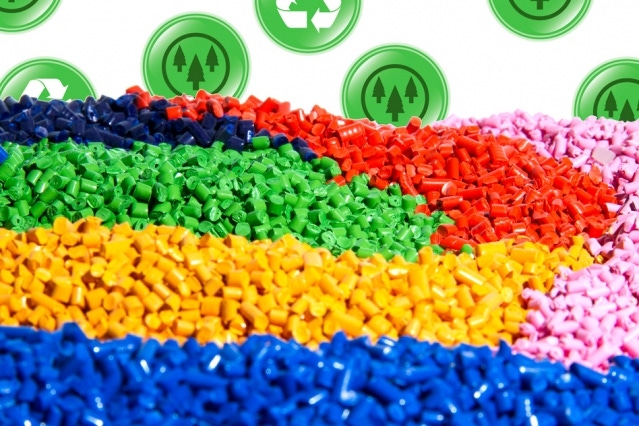PHAs are biodegradable thermoplastics created by bacteria as food and energy reserves. These are stored as granules in the cytoplasm of the bacteria. Now, scientists have determined the structure of one of the key enzymes enabling bacteria to pull this trick off.
November 18, 2016

 As natural thermoplastic biopolyesters, PHAs are currently seen as a good replacement for the oil-based plastics now used for packaging and coating applications. However, the PHA family of polymers is extremely diverse, offering a wide range of physical properties and providing a host of potential end-use applications. PHAs are produced directly by microorganisms, from various carbon sources. While scientists have long known that enzymes were involved in this process of biosynthesis, up until now, very little was known about them.
As natural thermoplastic biopolyesters, PHAs are currently seen as a good replacement for the oil-based plastics now used for packaging and coating applications. However, the PHA family of polymers is extremely diverse, offering a wide range of physical properties and providing a host of potential end-use applications. PHAs are produced directly by microorganisms, from various carbon sources. While scientists have long known that enzymes were involved in this process of biosynthesis, up until now, very little was known about them.
A team of chemists at MIT recently announced that they had successfully determined the structure of polyhydroxyalkanoate (PHA) synthase, a key bacterial enzyme found in nearly all bacteria, which generates long PLA polymer chains that store carbon when food is scarce. The discovery is an exciting one, as learning more about the enzyme’s structure could help engineers control the polymers’ composition and size, a possible step toward commercial production of these plastics.
The enzyme produces different types of polymers depending on the starting material. These can vary from hard plastics, to softer and more flexible materials, or materials with elastic properties that are similar to rubber.
The enzyme PHA synthase holds great interest for chemists and chemical engineers because it can string together up to 30,000 subunits, or monomers, in a precisely controlled way.
“What nature can do in this case and many others is make huge polymers, bigger than what humans can make. And they have uniform molecular weight, which makes the properties of these polymers distinct,” said JoAnne Stubbe, the Novartis Professor of Chemistry Emeritus and a professor emeritus of biology. Stubbe and Catherine Drennan, an MIT professor of chemistry and biology and Howard Hughes Medical Institute Investigator, are the senior authors of the study which appears in the Journal of Biological Chemistry.
Chemical scientists have been pursuing this enzyme’s structure for many years, but until now it has proven stubbornly elusive because of the difficulty in crystallizing the protein. Crystallization is a necessary step to performing X-ray crystallography, which reveals the atomic and molecular structure of the protein.
The successful crystallization of the protein was ultimately due to the efforts of two former graduate students, Marco Jost and Yifeng Wei, who are also co-authors on the paper, after which the researchers collected and analyzed the resulting crystallographic data to come up with the structure.
The analysis also revealed that the enzyme has two openings — one where the starting materials enter and another that allows the growing polymer chain to exit.
“The coenzyme A part of the substrate has to come back out because you have to put in another monomer,” Stubbe said. “There’s a lot of gymnastics that are going on, which I think makes this fascinating.”
Drennan’s lab now plans to try to solve structures of the enzyme while it is bound to substrates and products, which should yield even more information critical to understanding how it works.
“This is the beginning of a new era of studying these systems where we now have this framework, and with every experiment we do, we’re going to be learning more,” Drennan says.
About the Author(s)
You May Also Like


